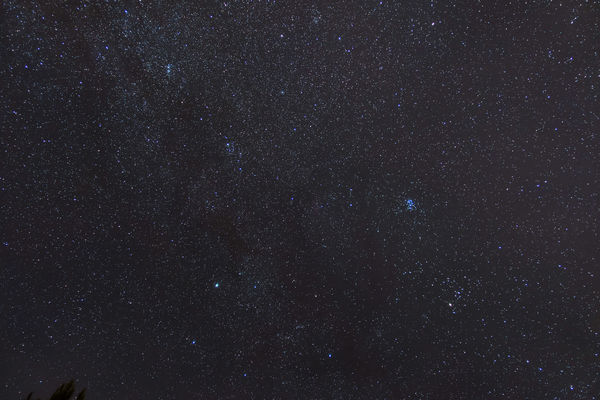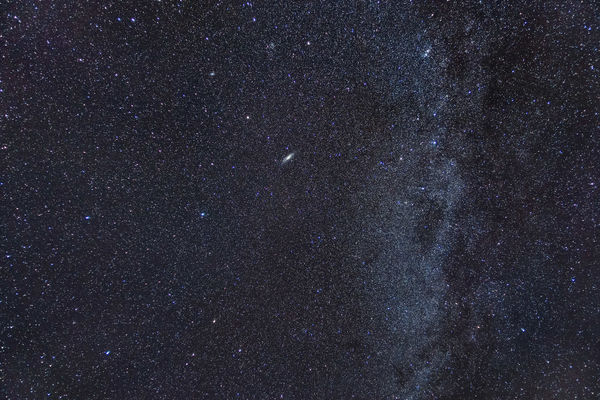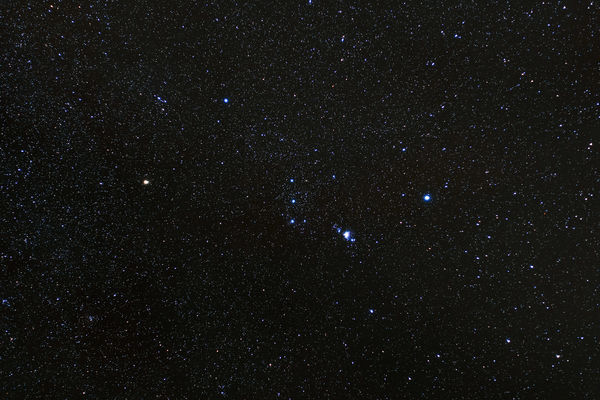Over the Thanksgiving weekend, I was able to get the iOptron Sky Tracker Pro out again and try some more wide field astrophotography. I learned (and should have known) that level is as important as polar alignment for good tracking. Having done most of my imaging with autoguiding which corrects for leveling and other mechanical errors, I did not level properly back in October and had a number of disappointing images. This night, however, turned out better.
I used my Sony RX-100 M4 camera to take the images, controlling the camera over WiFi using Sony’s PlayMemories Mobile software. This software allows complete control of the camera’s function from any iOS or Android device and is available from the respective app stores. [Please note that I am currently an employee of Sony Pictures Entertainment, and Sony is the parent company of my employer.] This night, I used my iPad. I selected three targets: The Pleiades and the Double Cluster in Perseus, M31 — the galaxy in Andromeda, and the constellation Orion.
For each image, I used 15 second framing exposures. Focus was set to manual and at infinity. Once framed, I took longer images, settling on three minutes for my target exposure time. The camera performs a long-exposure noise reduction that lasts as long as the exposure. So a three minute exposure is six minutes of imaging time. I tried turning that off in my failed October attempt, but the remnant noise was not easily removed (I admit I have not experimented extensively with this, but I did get good results with camera long-exposure noise reduction turned on).
I captured all the images in Sony raw (.arw) format and imported them into Adobe Lightroom. I exported them in TIFF format and then processed them in PixInsight. In PixInsight, I performed background neutralization, color correction and balance, and some contrast adjustment. I imported the result back into Lightroom, did light touch-up and noise reduction to produce the final results.
The first image I took was of the Pleiades and the Double Cluster in Perseus. Two beautiful objects in a small telescope or with binoculars. This was a simple, three minute exposure. The Pleiades are on the right in the middle of the image, the Double Cluster is in the upper left, and the bright star in the lower left is Capella.
Please click on any of the images to be taken to the gallery and see a higher resolution image.
For my image of the Andromeda Galaxy, I did a bit more processing. I took one two minute exposure and a one minute exposure, combining them in PixInsight. I would have taken a three minute single exposure but it was cold and I wanted to get on to Orion. This image had the most processing in PixInsight. The galaxy is the fuzzy spot in the middle of the image.
The final image I took was of Orion, which was fairly low in the sky, not more than 40° above the horizon. I also zoomed the camera which reduced the f-ratio by one stop, from 1.4 to 2.4. Because of this, I took a four minute exposure. My only comment on the processing is that I think I may have clipped the blacks too much. I’ll try again when it is higher in the sky.
You can see the Nebula in Orion in the center right. Note that the two brightest stars are Betelgeuse and Rigel. Rigel is on the left, for you should always remember that Rigel is not red. If you zoom in to the lowest star in Orion’s belt (Alnitak) you can see a little red which is the Flame Nebula. I have an image of it in the gallery.
Comments are welcome and I hope you enjoy the images.



